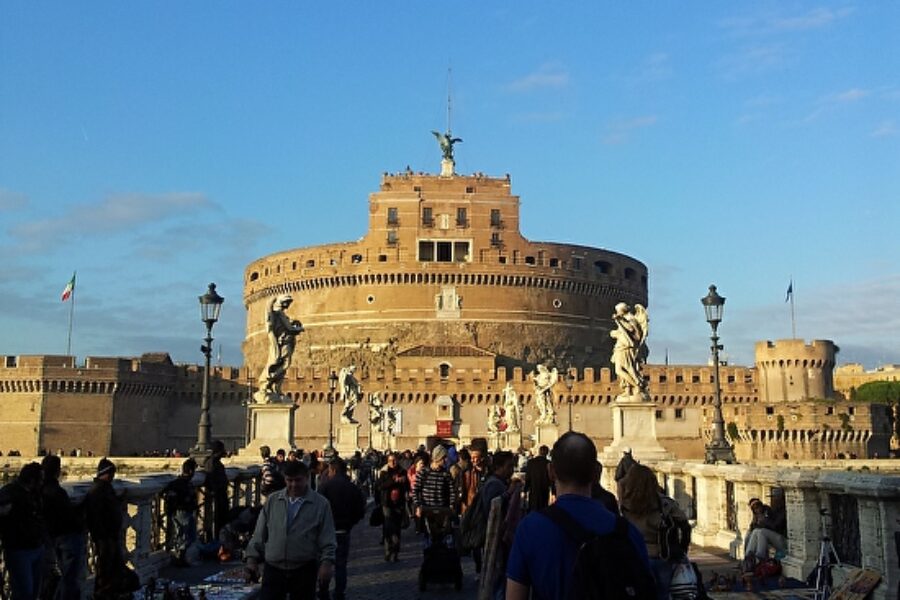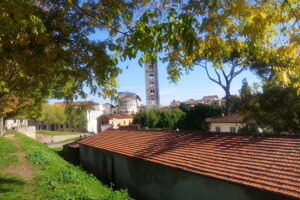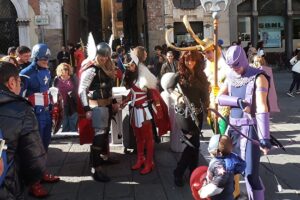The crowds and long lines at St. Peter’s are overwhelming, and we wisely postpone our visit, hoping a weekday will be better. We wisely make a detour toward Hadrian’s Mausoleum, a.k.a. Castel Sant’Angelo, also on our list for the day.
Making our way toward Castel Sant’Angelo, dodging cars, pedestrians, motorcycles, bicycles, and baby carriages, Michael asks me, “Why aren’t all these people at work?”
“It’s Saturday,” I remind him.


Arriving, amid throngs of visitors, street hawkers, musicians, and vendors I can’t help but wonder — Is it the day, the month, the year, or is it Dan Brown’s Angels and Demons? Twenty years ago, on a weekday in April, there was nary a person in sight. Standing here, I remember my enchantment entering the castle. We stepped through ancient doors, turning left, and walking up the narrow cobblestone path. The twisting, turning, stairs lead upward to a courtyard and the stone statue of St. Michael.


Some things I do not remember, so enchantment is at my doorstep once more. Winding our way through the dimly lit spiral passage, transiting a drawbridge through the chamber that held Hadrian’s ashes, walking up into the light — this is new to me. As new as the elaborately decorated pope’s chambers where the slightest sign of a camera brings security guards out of the woodwork, with menace in their eye.
Michael has rented an audio guide, we while away the afternoon, looking and listening.





History of Castel Sant’Angelo
Initially built by the Roman Emperor Hadrian it was used as a mausoleum for himself and his family. Originally a decorated cylinder, with a garden top, Hadrian’s ashes were placed here a year after his death. Following this ritual, the remains of succeeding emperors were also placed here, the last being Caracalla in 217 AD. (The ancient Roman portion of the building is identified by the irregular masonry.)

Much of the tomb contents and decorations are lost due to the building’s conversion to a military fortress in 401 and its subsequent inclusion in the Aurelian Walls. The urns and ashes were scattered by Visigoth looters during Alaric’s sacking of Rome in 410; the original decorative bronze and stone statuary were thrown down upon the attacking Goths when they besieged Rome in 537.
According to legend, the Archangel Michael appeared atop the mausoleum, sheathing his sword as a sign of the end of the plague of 590. The popes converted the structure into a castle, beginning in the 14th century; later Paul III built a rich apartment, to ensure that in any future siege the Pope had an appropriate place to stay.
The Papal state also used Sant’Angelo as a prison; executions were held in the small interior square.









Leave a Reply
Your email is safe with us.